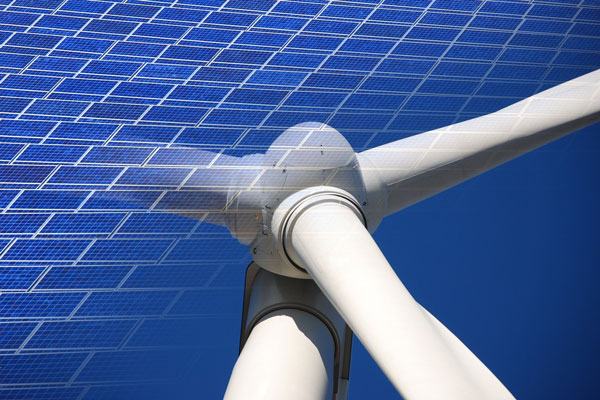Electricity is used in almost all walks of life. Industry, administration, health care or trade cannot do without electricity; Moreover, each person needs not only at work, but, above all, in his house, in constant access to electricity. Given the ever-growing demand for electricity and aware of the harmfulness of coal-fired power plants, governments of individual countries are increasingly making decisions about investing in renewable energy sources (RES). Which countries were considered the most attractive for this type of investment in the energy sector?
Ernst & Young Global Ltd, one of the four largest financial auditing companies in the world, presented another report, in which the countries most attractive from the point of view of investment in renewable energy were placed.
The attractiveness index, according to which individual countries were ranked, was calculated based on the answers to five questions:
Is there a long-term need for an additional or replaced energy source in the country? If so, does everything really mean that it is a renewable source?
Does the current energy policy support or block the use of renewable sources in this country?
Will new projects receive support in the form of long-term contracts, existing infrastructure and technologies used?
How is the idea of using “green” technologies in this country formed?
Does the macro-stabilization of the state and “climate” of investments in energy investments using renewable energy sources work positively or negatively?
1. China
Although the International Energy Agency reported later this year that 75% of China’s energy needs cover coal-fired power plants, the country is determined to switch to renewable energy sources. So far, he has invested more than 126 billion dollars in it, which is more than in any other country in the world.

The global energy transformation towards renewable energy is gaining momentum, accelerating the development of energy storage and electromobility, and China wants to become a world leader in these areas for the coming decades, says the Institute of Energy Economics and Financial Analysis (IEEFA).
2. United States
In 2017, 18% of the total energy produced in the United States accounted for renewable sources, which is 3% more than in 2016. This growth was mainly due to the implementation of projects of solar and wind power plants.
The share of the renewable energy sector in electricity production has doubled since 2008. At the same time, the share of coal energy decreased from 48% to 30%. The administration of Donald Trump announced a reduction in funds allocated to renewable energy, but thanks to private commitments, this declaration will not have too much impact on the further development of renewable energy in the United States.
3. Germany
According to the portal smard.de, on May 1 of this year, Electricity production in Germany from renewable sources exceeded domestic demand for electricity. The day was windy, but sunny: in total, it was able to produce 53,987 MWh (before 13:00), while demand reached only 53,768 MWh.
4. India
In India, coal plays the largest role in the energy structure: its share reaches 60%. Prime Minister Narendra Modi, however, plans to increase the share in the structure of energy consumption obtained from renewable sources from 57 GW (May 2017) to 175 GW (end of 2022). Up to 100 GW from photovoltaics.
The European Investment Bank has invested 400 million US dollars in solar energy in India, and the World Bank said that India has some of the best conditions for collecting and using solar energy.
5. Australia
In 2017, the share of renewable energy in the Australian energy mix was 17%, despite the fact that politicians in this country are reluctant to support this method of generating energy. Despite the fact that the government promotes the use of coal, it is estimated that by 2030, 42% of electricity in this country will come from renewable energy sources.
6. France
In France, the production of energy from renewable sources has a very good press, it is also systematically supported by subsequent governments. Currently, a plan is being implemented to increase the capacity of wind power plants to 200%: in 2017, the French can produce 13.76 GW thanks to wind power plants, and in 2023 – almost 40 GW.
In 2017, the power of solar farms was slightly less, but still significant: 8.04 GW.
7. United Kingdom
Imperial College London reported that in 2017 in the UK, 25% of the energy produced was obtained from renewable energy sources: the volume value was 96 TWh. Only 7% of energy production included the use of carbon sources.
The British energy base is mainly based on nuclear power plants, which last year produced 70 TWh of energy.
8. Japan

In Japan, the largest share in the energy structure is occupied by gas power plants – 40%. Coal-fired power plants fill 30% of the mixture, and renewable energy sources, about 15%. By 2030, the Japanese government will increase the share of renewable energy in the mix to about 24%, but the policy on this issue is not consistent.
This is reflected in the market: more than 80 companies engaged in photovoltaics, went bankrupt over the past year in Japan. However, the Prime Minister promises support for energy producers.
9. Netherlands
The Netherlands is currently at the stage of intensive investment in the use of renewable energy sources. According to the agreements reached during the negotiations at the European Union forum, by 2020 they should be 14% in the national energy structure of RES.
The most commonly used investments in the Netherlands include offshore wind and solar power plants.
10. Denmark
Among the Scandinavian countries that have been investing in the development of energy production from renewable sources for years, Denmark is currently the most active participant in this type of activity. The International Energy Agency (IEA) has called Denmark the world leader in decarbonization. Last year, electricity generated by wind power plants accounted for 43.4% of the total energy. In a little over 30 years (in 2050), the Danes will produce energy only using renewable energy sources – or so they promise.


